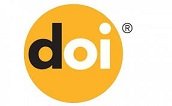A Conceptual Framework on the Relationship of Digital Technology and Art
1255
441
Abstract
The ‘new digital art’ genre has emerged to describe various works of art that have evolved with the development of digital technologies. In its broadest sense, digital art encompasses everything from high-end machine learning applications to the use of interactive elements in traditional media. There is also an increase in the interaction between information technologies and art. Science, art and technology has been increasing and becoming widespread since the 60s, when scientists, artists and inventors began collaborating and using electronic devices to create art. The experience that results from consuming art and culture is multifaceted in nature. It can be individual or collective, physical or virtual, active or passive, public or private, on-site or in private places, open-air or indoor. With the spread of digital art, there is a remarkable increase in the commodification of art. This article, in this context, analyzed and discussed digital art, its positive and negative aspects, and the commodification of this art type on the basis of literature.
Keywords
Digital technology, Art, Digital art, Commodification
Full Text:
PDFReferences
Ozdemir, D. (2022). A conceptual framework on the relationship of digital technology and art. International Journal on Social and Education Sciences (IJonSES), 4(1), 121-134. https://doi.org/10.46328/ijonses.313
DOI: https://doi.org/10.46328/ijonses.313
Refbacks
- There are currently no refbacks.
Copyright (c) 2022 International Journal on Social and Education Sciences

This work is licensed under a Creative Commons Attribution-NonCommercial-ShareAlike 4.0 International License.
Abstracting/Indexing





International Journal on Social and Education Sciences (IJonSES) - ISSN: 2688-7061
affiliated with
International Society for Technology, Education and Science (ISTES)

This work is licensed under a Creative Commons Attribution-NonCommercial-ShareAlike 4.0 International License.
 International Journal on Social and Education Sciences
International Journal on Social and Education Sciences